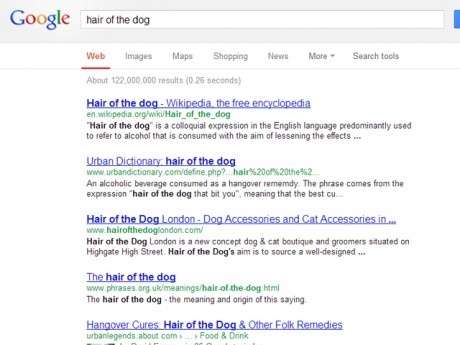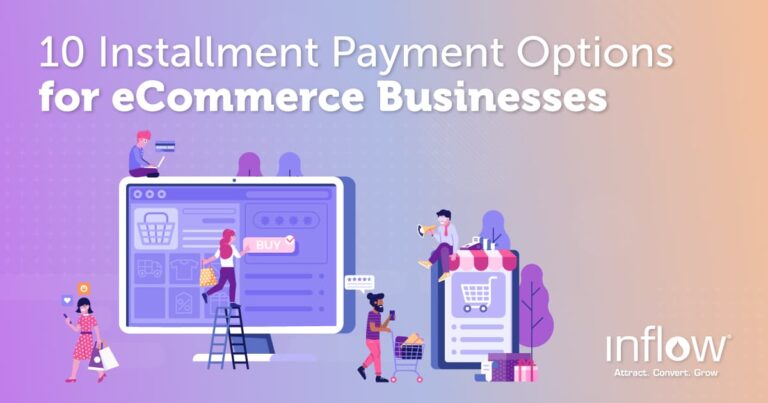From increasing the sales and enquiries of 300+ websites, we’ve learned a thing or two about what actually increases eCommerce SEO revenue. Sometimes, it’s hard to believe what actually works…
1. Target low search volume keywords
Well straight off the bat, this eCommerce SEO strategy seems counter-intuitive! Surely the whole purpose of SEO is to drive more traffic to your site, so targeting keywords with 1,000s or 10,000s of searches per month is where to focus your efforts, rather than phrases with just 10s or 100s of searches per month? No. Unless your site already ranks on page 1 for the high volume search keywords, pick the low hanging fruit first.

Why are low search volume keywords so effective?
Faster to page 1 As everyone else is targeting those high volume search keywords (like “maxi dresses”), it’s usually considerably quicker to rank on page 1 of Google for lower search volume keywords (“designer maxi dresses”) as there is far less competition. More likely to rank at the top Not only can you get to page 1 in a matter of months of adding low search volume keywords to your website content rather than years, but because Google particularly favours exact match keywords, you’re more likely to win a top 5 place. Plus, those top spots get the lion’s share of the search traffic! Higher conversion rate Lower search volume keywords are typically “longer tail” keywords (search phrases with 3-4+ words), which means they are more relevant to a specific user search and have more buying intent than a generic high volume search. The resulting effect is that the longer tail keywords can have a visit to conversion rate of 10-100% – that’s 10-100 times the amount of sales than from a generic high volume visit from search!
Key low search volume strategy takeaway
You need far less SEO traffic than you might think to dramatically increase eCommerce SEO sales.
Your best eCommerce SEO metric to measure success
Revenue from SEO is the best metric to measure. You can also stay on top of performance by monitoring your SEO conversion rate before and after you implement this strategy. Proceed with caution though, as if you’re also running other brand awareness campaigns then the positive effects on SEO conversion rate will likely be negated with the increase of visitors from the getting-to-know-you stage.
2. Focus on optimising category pages
Contrary to popular belief, the majority of eCommerce SEO revenue from the most successful eCommerce websites, comes from visitors who don’t even see your homepage! Instead, the majority of eCommerce SEO revenue comes from visitors who sneak in round the back to land directly on your eCommerce category and product pages using a more specific search query.

In fact, one of the fastest ways to see how big the opportunity is to increase your online revenue via SEO is to see what percentage of your SEO revenue comes from your homepage. If it’s more than 50%, you have a major opportunity to expand the optimisation of your category and product pages with advanced eCommerce SEO techniques.
Why is optimising your category pages so effective?
Older content has more authority Unlike your products which will change over time (even more of an issue if you’re in a fast moving industry like fashion or tech) category pages typically stay around much longer. If they are removed from the navigation due to being out of season such as at Christmas time, re-use the exact same URL next year and build up the authority of the page each year. Focus your SEO resources on your best-selling categories and sub categories, where you are likely to have the widest range and if you have more products to choose from in a particular category than anyone else online, then Google is more likely going to see you as a leading expert for that category and reward you with the most lucrative natural rankings. Targets consideration stage buyers Once you gain page 1 rankings for category type keywords such as “designer maxi dresses”, you will start to find you also rank for other keyword variations and alternatives for that same page, such as “long designer dresses” and these lower volume searches add up together to a nice chunk of new visitors coming to your site every month. With the best thing being, these visitors know what they want and have made their search more specific because they are further down the buying funnel. Therefore they are more likely to convert than someone at the start of their buying journey. Drives new customers directly to buy Getting more SEO traffic to your eCommerce site is great but if it’s all going to the homepage or the blog, the majority of these visitors are more likely to be your existing customers or not looking to buy right now. Whereas building the authority of your category pages drives brand new customers to buy from you in two ways. Not only does it increase the organic rankings of your category pages for consideration stage buyers who have a higher conversion rate. But those convenient text links from category pages to your product pages pass across some of the category page authority to each of those product pages, helping each of your product pages rank higher for even more specific, extra-long tail keywords which often have 100% conversion rates!
Key category page optimisation strategy takeaway
Forget poring over blog, product page and homepage optimisation all day, instead prioritise the majority of your SEO resources on advanced eCommerce SEO optimisation of your best-selling, year round category pages that have the most products.
Your best eCommerce SEO metric to measure success
Compare eCommerce revenue to all your landing pages from SEO by popularity before and after this strategy is implemented. Plus as a bonus metric take a look at the total % split of the SEO revenue from the homepage compared to all other landing pages.
3. Identify bulk buyers
Often neglected as a separate target audience segment entirely, bulk buyers can be one of the fastest ways to add exciting leaps in eCommerce SEO revenue.

Bulk buyers could be any audience segment that would buy your products or services in large quantities. For example, this could be business to business customers who instead of buying 1 gift at a time like consumer customers, might buy 10 or even 100 gifts for their clients or staff at a time. How would you fancy seeing a few fat £500 or £5000 corporate orders coming through each month, rather than just the usual £50 consumer orders? Then continuing to see a nice steady stream of these larger orders each and every month after then?
Why is identifying bulk buyers so effective?
Low competition Not many have cottoned on to this eCommerce SEO strategy… so shhh don’t tell everyone! But it’s not always immediately obvious what type of customer a bulk buyer would be for your particular industry. It may require a certain amount of lateral thinking (of course it does help if you’ve seen how this strategy drives significant growth in eCommerce SEO revenue for numerous websites across the retail, furniture, fashion, travel, tech and charity sectors)! Super-relevant As consumers, there is a huge amount of psychology that goes into what makes us buy online, but ultimately this can be summarised by the title of Steve Krug’s highly successful web usability book, “Don’t Make Me think”. So creating relevant landing pages specifically targeting your bulk buying audience with the exact phrases they search with in the meta data and the main headers, plus using images and reviews or testimonials of people just like them, proves to be a powerful combination in driving a high number of conversions from only a small amount of very relevant traffic. High customer lifetime value The best part about attracting high value orders is whilst there will be far fewer of these orders compared to your usual audience, when these bulk buyers re-order they order big, again and again. So the customer lifetime value of targeting the bulk buyers could be… very large indeed.
Key bulk buyer strategy takeaway
Fish for the big fish where few are fishing and reap both short term and long term revenue rewards.
Your best eCommerce SEO metric
Measure eCommerce SEO revenue from your newly created bulk buying audience landing pages from before and after this strategy is implemented.
In summary
It really does pay to do things differently. These eCommerce SEO strategies may surprise you but the revenue increases that can be achieved using these approaches, can be astounding. Follow my contributions to the blog to find out more about eCommerce SEO or sign up to the ThoughtShift Guest List, our monthly email, to keep up-to-date on all our blogposts, guides and events.






